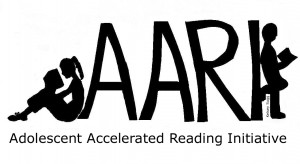 A real conversation, repeated yearly:
A real conversation, repeated yearly:
“I really wish we could find a way to reach these struggling readers.”
“You know what might work really well? Graphic novels.” (That’s me, in a very hopeful tone.)
“Oh, good idea—we have all those copies of Maus!”
“Well, yeah…” (That’s me again, giving up the gun, so to speak.)
I’ve previously argued that being too tied to the classics alienates a lot of our fledgling readers. But in some ways, the tunnel vision about worthy graphic novels is an extension of that classics-oriented mindset.
Maus is a tragic, intelligent, powerful story told with heart-tugging visuals. Teachers who use it in their classrooms are rightly proud. They are exploring an important fictional work, in a historical context that students should understand deeply. At the same time, they are teaching students about a new genre of literature that most of them otherwise might never be exposed to.
But Maus is also heavy and sort of depressing. It’s a book that demands stone-faced seriousness.
That’s all to say, Maus’s visual nature doesn’t necessarily make it an appealing alternative to a traditional novel.
A Successful Experiment
After years of mumbling about graphic novels at department meetings, I finally decided to put my money where my mouth is. A few weeks ago I brought into class my collection of Flight graphic novels, my copy of Batman: The Long Halloween, and the award-winning Concrete graphic novel.
On the first day, a girl forgot her Kindle at home and asked to borrow the Batman book. “I just need something for today,” she said insistently.
She conveniently forgot her Kindle for the rest of the week and finished the book.
A couple days later, a student in my 6th hour selected the same graphic novel, tore through it in two days (graphic novels are quick reads), and then exchanged it for Concrete, which he took home and finished in a single night. In both cases, I ended up enjoying extensive conversations with the kids about literature. An English teacher’s dream, if ever there was one!
Graphic Novels as Success Stories
The best part of this experiment, though, has been the reaction from my co-departmental class. These are students who collectively read at around a 4th-grade level.
Mark (name changed) was the first student to borrow the Batman novel. Mark is a well-intentioned reader who would spend his entire 15 minutes of independent reading time slogging through perhaps three pages of a traditional novel. He would then chat with me afterward, mostly to check his understanding of the strange scientific concepts that inhabit Michael Crichton’s works.
 It was inspiring and tragic to watch him try to tackle a book that matched his interests, but which was simply beating him down in terms of comprehension. I wasn’t about to tell him to quit; he’d come too far for me to do that to him.
It was inspiring and tragic to watch him try to tackle a book that matched his interests, but which was simply beating him down in terms of comprehension. I wasn’t about to tell him to quit; he’d come too far for me to do that to him.
Turned out, I didn’t have to. Batman saved him, and suddenly our conversations were two-way streets. He’d confidently tell me about the story elements that he loved, instead of asking whether he had the details right. He has since moved on to his second Flight story collection and chats with me practically every other day about the pleasures in them.
And it’s a good thing he moved on to another graphic novel, because the moment he set down Batman, his friend Daniel (name also changed) picked it up and plowed through it. Daniel had been reading the third book in the A Child Called It series, which seems like too much heavy-handed literature for any reader to take on before graduating high school. But Daniel has embraced the graphic novel format, and it’s gratifying for both of us to experience his actually turning pages when he reads.
Start Simple
My personal collection clearly isn’t going to meet the demand. And so I plan to apply for a grant for graphic novels to add to my classroom collection. But if you’re only curious to try this out, start simple. Besides the titles I mentioned above, there are countless great titles in the genre. Persepolis and American Born Chinese are both fantastic reads featuring minority voices.
More mature readers might even appreciate the political complexities of Alan Moore’s cult-classics Watchmen and V for Vendetta. They pair just as well with Brave New World and Fahrenheit 451 as they do with an ice cold Coke and a bag of potato chips. In other words, hand your students some graphic novels and see what it leads them to!

Michael Ziegler (@ZigThinks) is a Content Area Leader and teacher at Novi High School. This is his 15th year in the classroom. He teaches 11th Grade English and IB Theory of Knowledge. He also coaches JV Girls Soccer and has spent time as a Creative Writing Club sponsor, Poetry Slam team coach, AdvancEd Chair, and Boys JV Soccer Coach. He did his undergraduate work at the University of Michigan, majoring in English, and earned his Masters in Administration from Michigan State University.

 Now that I’ve covered the
Now that I’ve covered the  are probably not a struggling reader. But you probably have struggled with learning something new or tackling something difficult. You could try something new, or bring in your graduate school work and explain what is difficult for you–anything to show that improvement takes time, practice, and strategies to succeed.
are probably not a struggling reader. But you probably have struggled with learning something new or tackling something difficult. You could try something new, or bring in your graduate school work and explain what is difficult for you–anything to show that improvement takes time, practice, and strategies to succeed.
 Even if your group of struggling readers is blossoming, it’s important to consider how your community can continue to grow and thrive. That’s especially true for classrooms organized around the
Even if your group of struggling readers is blossoming, it’s important to consider how your community can continue to grow and thrive. That’s especially true for classrooms organized around the  Break bread together. One Friday a month, my classes would have what came to be known as “Food Fridays.” It usually started with my bringing in some snacks (think Costco/Sam’s Club granola bars or crackers). Some years, it took on a life of its own. Students would initiate elaborate sign-up sheets, and they would bake brownies and frost cupcakes. Other years, the kids were just happy to have a little something to eat while we worked.
Break bread together. One Friday a month, my classes would have what came to be known as “Food Fridays.” It usually started with my bringing in some snacks (think Costco/Sam’s Club granola bars or crackers). Some years, it took on a life of its own. Students would initiate elaborate sign-up sheets, and they would bake brownies and frost cupcakes. Other years, the kids were just happy to have a little something to eat while we worked. It happens to my husband all the time. He is a police officer, and it is rare that he can make it through a party without someone asking him how to get out of a recent ticket. It almost always starts the same way.
It happens to my husband all the time. He is a police officer, and it is rare that he can make it through a party without someone asking him how to get out of a recent ticket. It almost always starts the same way.  After Thanksgiving, my AP Language students and my ELA 10 students are starting new writing assignments. Now is the time, I think, to
After Thanksgiving, my AP Language students and my ELA 10 students are starting new writing assignments. Now is the time, I think, to 
 We hear it all the time: ELA is frustrating and maybe an easier subject, because “there’s no right answer.” It’s all argument and evidence. Math and science, on the other hand . . . they’re objective. Who can argue 2+2, or that the sun is 93 million miles away?
We hear it all the time: ELA is frustrating and maybe an easier subject, because “there’s no right answer.” It’s all argument and evidence. Math and science, on the other hand . . . they’re objective. Who can argue 2+2, or that the sun is 93 million miles away? My colleagues and I have been using
My colleagues and I have been using  Rick Kreinbring teaches English at Avondale High School in Auburn Hills, Michigan. His current assignments include teaching AP Language and Composition and AP Literature and Composition. He is a member of a
Rick Kreinbring teaches English at Avondale High School in Auburn Hills, Michigan. His current assignments include teaching AP Language and Composition and AP Literature and Composition. He is a member of a  When I began blogging with my 5th graders a few years ago, it was only to participate in the
When I began blogging with my 5th graders a few years ago, it was only to participate in the  When I said “yes” to all, a new excitement filled the room. Soon students were busily typing stories that were mostly fiction, a genre our writing curriculum doesn’t touch in 5th grade. As they wrote, I was struck by something: They had passion and excitement for writing. The length of the writing alone was impressive, but there were paragraphs and dialogue! Students wanted to know if they could end with an ellipsis and “to be continued.” They were excited to write in this way and to read the writing of their classmates. I’d found gold.
When I said “yes” to all, a new excitement filled the room. Soon students were busily typing stories that were mostly fiction, a genre our writing curriculum doesn’t touch in 5th grade. As they wrote, I was struck by something: They had passion and excitement for writing. The length of the writing alone was impressive, but there were paragraphs and dialogue! Students wanted to know if they could end with an ellipsis and “to be continued.” They were excited to write in this way and to read the writing of their classmates. I’d found gold. Beth Rogers is a fifth grade teacher for
Beth Rogers is a fifth grade teacher for  When teens go crazy for a book or a book series, it’s a school librarian’s dream come true. But with the success of one series, next comes the pressure of finding something similar to keep the reading momentum going. For the last few years, I’ve been chasing
When teens go crazy for a book or a book series, it’s a school librarian’s dream come true. But with the success of one series, next comes the pressure of finding something similar to keep the reading momentum going. For the last few years, I’ve been chasing  The Testing series has many similarities to both The Hunger Games and Divergent. Yet it is different enough to hold even a reluctant reader’s interest.
The Testing series has many similarities to both The Hunger Games and Divergent. Yet it is different enough to hold even a reluctant reader’s interest.